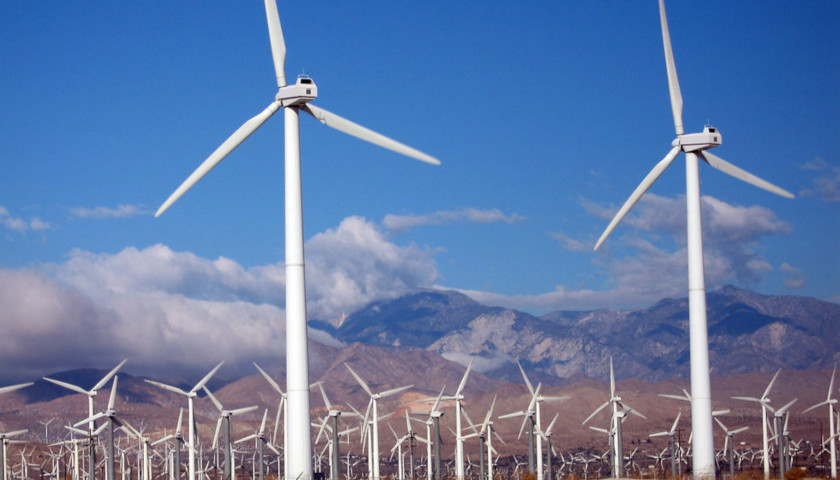The Seneca Anti-Wind Union (SAWU) was created by residents who are concerned about the growing number of wind farms popping up throughout their community. The group has been talking to elected officials, gathering research, and growing rapidly. They believe they have just won a significant victory – Seneca Wind withdrew its application for a large wind farm on August 9.
“After a long tough battle Seneca Wind has withdrawn its application to build its 77 turbine project in Seneca County. Seneca Wind applied for delays in the process five times due to unfinished details, but the Ohio Power Siting Board has denied any further delay causing Seneca Wind to withdraw,” SAWU member Chris Aichholz told The Ohio Star.
“Problems with the FAA [Federal Aviation Administration] approval seems to have been the final straw. Although Seneca Wind reserves the right to re-apply for the project this would be an expensive and lengthy process. Also complicating things for them is the fact that a large number of leases have expired and many of the landowners want out of the project,” Aichholz added.
“Seneca Wind had made the case in court that the leases were still in force because the project was in the construction phase, but since the application has been withdrawn that argument would no longer seem to have any validity. This is a victory for those fighting to protect Seneca County from being transformed into an industrial zone without local residents having a vote on the matter,” he said.
SAWU has been expanding and helping others to start like-minded organizations throughout northern Ohio. Members are hoping to get legislation passed that will allow local citizens to vote on whether or not the community wants wind farms.
The group said they are working with State Reps. Bill Reineke (R-Tiffin) and Bill Seitz (R-Cincinnati) to draft a bill that includes language stripped from House Bill 6 – language that would have given local residents the right to referendum a wind farm.
 One major argument against wind farming in Ohio is that farms aren’t generally located in areas that have sufficient wind resources to make them profitable. According to the government data, Seneca County and most of Ohio barely have those minimal requirements.
One major argument against wind farming in Ohio is that farms aren’t generally located in areas that have sufficient wind resources to make them profitable. According to the government data, Seneca County and most of Ohio barely have those minimal requirements.
State Sen. Andrew Brenner (R-Powell), who sits on the Senate Energy and Public Utilities Committee, said, “Wind turbines are not as viable an option here in Ohio because our wind isn’t as steady as out west. Most wind farms would not exist [here] without federal and state subsidies.”
SAWU has been educating the community and elected officials about the problems they see with the ever-growing numbers of wind turbines. In addition to aesthetics, SAWU says the problems range from declining property values, deaths of birds and bats, issues for local Air National Guard bases, and negative environmental impacts.
On the other side of the issue are many farmers. At a time when agriculture in Ohio is suffering from excessive rain and lack of planting, wind farm leases provide a much-needed income stream. It’s pitting neighbor against neighbor.
Most residents are unhappy with the appearance of the massively tall structures, some of which are approaching 600 feet – nearly twice the height of the Statue of Liberty. They are convinced that real estate studies provided to the Senate Energy and Public Utilities Committee during the hearing of House Bill 114 last year were faulty. The bill’s purpose was to revise the energy efficiency provisions. It died in the Senate.
Seneca County residents are looking to a nearby county, Van Wert, for evidence that home values are negatively affected. Jeremy Kitson, a Van Wert County resident where wind farms are plentiful, did the research himself. He looked over the County Auditor’s valuations and determined that during the construction of the Blue Creek Wind Project in Union Township from 2006 to 2011, the median home value in the township declined by 8.9 percent while overall county valuations fell only 0.4 percent.
Another opponent is the Black Swamp Bird Observatory. They testified against the Seneca Wind Project, one of several wind farms slated for Seneca County, when the issue came before the Ohio Power Siting Board. In addition to noting that local birds and bats can be killed by wind turbines, the Observatory also said they are “located squarely within the migratory pathway of birds flying through Seneca County on their way to and from breeding areas in the northern United States and Canada and wintering areas of Central and South America. This migratory pathway is one of the preeminent and most important migration routes for birds in North America.”
In New York, State Sen. Rob Ortt (R,C,I – North Tonawanda) authored a bill to prohibit installation of wind farms within 40 miles of a military base. He told the press, “We cannot risk hindering the air base’s operations, security and potential new missions. Our environment, public safety and quality of life are far more important than the negative impact wind turbines could pose.” Congressman Chris Collins (R-27-NY) introduced similar legislation federally.
Neither bill passed, in spite of the fact that there is growing evidence that turbines interfere with radar both for planes and for weather.
The National Weather Service revealed the impact of wind farms on weather radar in their article Wind Farm Interference Shows Up on Doppler Radar. The Department of Energy acknowledged the radar problem as well.
“If not mitigated, such wind development can cause potential interference for radar systems involved in air traffic control, weather forecasting, homeland security, and national defense missions,” it said.
In 2008, the Department of Homeland Security (DHS) asked JASON, an independent scientific advisory group, “to review the current status of the conflict between the ever-growing number of wind-turbine farms and air-security radars that are located within some tens of miles of a turbine farm.”
In the Executive Summary of their report, JASON wrote, “Wind farms interfere with radar. This interference has led the FAA, the DHS, and the DOD [Department of Defense] to contest many proposed wind turbines in the line of sight of radar…the nation’s aging long range radar infrastructure significantly increases the challenge of distinguishing wind farm signatures from airplanes or weather.”
Additionally, SAWU and other opponents note the environmental issues with wind energy. The Wall Street Journal wrote, “building one wind turbine requires 900 tons of steel, 2,500 tons of concrete and 45 tons of plastic.”
Mark Mills’ article in the Journal, “If You Want ‘Renewable Energy,’ Get Ready to Dig,” claims “renewable energy” is a misnomer. He explains that turbines require massive batteries made from non-renewable products. A massive increase in wind farms will require a significant investment in mining. The decommissioning of old turbines will produce millions of tons of waste.
Seneca County residents have shared these concerns and more with local officials and are gaining some ground. Last March, the Commissioners voted to support wind farms, but so much has changed since then that they voted two to one last week to withdraw their support for current and future projects.
“Going forward we urge every one to support Representative Reineke’s work in Columbus to pass a bill that would allow for a referendum on wind projects so that all local citizens can have input on such a major change to the fabric of their community,” SAWU’s Aichholz said. “The current process allows State regulators to make such decisions with no local vote, and that tends to motivate massive opposition.”
– – –
Beth Lear is a reporter at The Ohio Star. Follow Beth on Twitter. Email tips to [email protected].






Great article! If farmers are counting on wind turbines to save their farms they will be very disappointed. Only a small percentage of leaseholders will get a turbine which pays about $15,000 per year. The rest get $500-$1000 dollars per year which is not going to go far at all. Crop insurance paid about $300 per acre this year for acreage that was too wet to plant. That would be around $60,000 if you had enough land to place a turbine. And, when signing a lease, the landowner has no say in whether or not they will get a turbine on their farm. The wind company decides where they will be located. The turbine may be built just over the line on your neighbors land with a road built through your fields to get to it. Neighbor gets the $15k, you get the point rows.